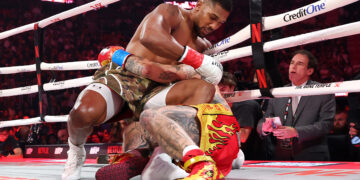
The martial arts of Muay Thai and Lethwei are deeply ingrained into the history and national identity of the neighbouring countries, Thailand and Myanmar (formerly Burma) respectively. The fact that these countries share a border may lead casual fans to believe that the sports are almost identical. Even their monikers, “The Art Of Eight Limbs” (Muay Thai) and “The Art Of Nine Limbs” (Lethwei) would suggest that simply removing headbutts from the latter would bridge any gaps between them. However, a deeper study reveals that beneath the surface, each sport has a unique style and expression that changes the way bouts are fought and judged. This article gives a summary of the histories, pre-fight rituals, and scoring criteria that make each sport unique before explaining how each sport’s rules have impacted its expansion onto the global stage.
1) History
Both Muay Thai and Lethwei have histories spanning across centuries where they were utilized as weapons of war, sometimes even pitted against each other as their birth nations fought for land and resources.
Lethwei can trace its roots right back to the birth of ancient Myanmar in the 10th century when warrior King, Anawratha, utilised the martial art as part of his conquest of surrounding nations to birth the first Burmese empire. It remained an integral part of the nation’s identity with boys across the country being trained in the art and competing in numerous tournaments until 1886 when British invaders outlawed the sport, forcing it underground.
Muay Thai was first utilized by the Thai army centuries after its Burmese counterpart, in the 1600s, and remained an integral part of the nation’s military training for centuries to follow. It played a crucial role in the Thai-Burmese conflict of 1774-1776, birthing legends such as Nai Khanom Tom, ‘The Father of Muay Thai’ whose victory over 10 of Burma’s best martial artists is still celebrated as a national holiday in Thailand to this day.
Ancient Muay Thai and Lethwei shared many more similarities than their modern-day equivalents. Formerly known as Muay Boran or Muay Khat Chuek, Muay Thai was traditionally fought in a roped circle upon the sand and without gloves much like traditional Lethwei contests. It wasn’t until the 1920s, while Lethwei was still outlawed in its homeland, that Muay Thai underwent a period of modernization where boxing rings and leather gloves became the norm across Thailand. Modern Lethwei bouts also adopted the use of boxing rings when the ban on the sport was lifted in 1948 but bouts are still fought bare-knuckled with only a small amount of gauze protecting a fighter’s hands.
2) Pre-Fight Rituals
Muay Thai and Lethwei practitioners both perform pre-fight dance rituals before they compete. The “Wai Khru” is the name of the ritual performed by Muay Thai practitioners. It is done both to pray for protection during the upcoming battle and to offer respect to those who have trained them while the “Lethwei Yay” of Lethwei is a way of showing skill and respectfully challenging an opponent to fight. Due to the similarities between them, many fans find it difficult to tell these rituals apart. Luckily both dances contain clues that once spotted reveal a clear distinction between them.
In a Muay Thai Wai Khru, fighters wearing a sacred headpiece known as a Mongkhon will begin by ‘sealing the ring,’ an act of walking from corner to corner with their hand upon the top rope. This contrasts with the “Lekkha Moun” which initiates the Lethwei Yay. It is an act where a fighter will bend their left arm and strike their elbow crease three times with their cupped right hand.
3) Rules And Scoring
The rules and scoring criteria for both Muay Thai and Lethwei have undergone several changes over the past century as the sports look to expand to an international audience who, for the most part, are uneducated on their traditional scoring practices. As a result, each sport can be scored or judged differently depending on where a bout takes place but for simplicity, this article will compare five-round stadium Muay Thai scoring to the Tournament Lethwei Federation ruleset adopted by the Myanmar Ministry of Health and Sports in 1996, both of which are currently amongst the most dominant forms of their respective sports.
Lethwei is fought over 3, 4, or 5 three-minute rounds with a two-minute break between each round, and traditionally the only way to win was by knockout, A feat rarely accomplished because fighters are granted a two-minute timeout following a knockout, even if they are put to sleep, before deciding if they want to continue.
Given the tendency for most bouts to result in a draw, even if one combatant was dominated for the entirety of a fight, the modern rule set adopted a scoring criterion that would allow judges to determine a victor even if both fighters were still standing at the closing bell. In this modernized system, judges determine a winner based on aggression, damage, the amount of blood drawn, and significant strikes per round. As a result, Lethwei boxers tend to favor punches, headbutts, and elbows due to their propensity for drawing blood.
Stadium Muay Thai is also fought over five rounds, each being three minutes long with a two-minute break but unlike Lethwei, blood and aggression do not always determine the winner. Judges determine winners based on effective striking and the ability to control the tempo of a fight rather than the shots landed or pure, forward aggression. Strikes that fold an opponent’s body or cause them to lose their balance are scored highly and therefore Nak Muay’s tend to throw kicks, knees, and sweeps more often to achieve these effects. Unlike modern Lethwei which is scored round by round, Muay Thai bouts are scored in their entirety. This means that fighters tend to start slower than most combat sports, saving themselves for a strong finish. It is a very nuanced process which Muay Thai journalist, Matt Lucas breaks down in detail in the video above.
Conclusion
With all of this in mind, it becomes clear that there is more separating these martial arts than the inclusion or exclusion of a “ninth limb” and though both sports have made changes to become more westernized in the last century it does not mean that they have been equally accepted by global audiences.
Muay Thai, it seems has become a clear favourite amongst international fighters and fans. It has spread across the world with promotions being held in countries such as Britain, Saudi Arabia, and even Mexico. There are even several amateur world championships held by various Muay Thai governing bodies each year, which has led to calls for the sport to gain Olympic recognition.
Lethwei’s growth has been limited by comparison. The use of headbutts, the absence of protective gloves, and the high volume of knockouts are a drawing point for carnage-loving spectators, but its uptake has been stifled by the fact that its brutal ruleset has seen it outlawed in all but 11 countries. With Lethwei World Championship, the sport’s only international promotor, ceasing operations in March 2021, the sport will need to adapt further if it is going to have a presence on the global stage in the future.
You may also like:
11 Important Muay Thai Sparring Etiquette You Need To Know
Timeless Tradition: Understanding the Difference Between Muay Thai & Muay Boran
The evolution of martial arts designed for combat, and warfare situations is not uncommon and throughout history, this has been the case as the times continue to change. When comparing Muay Thai with Muay Boran,…
Southpaw fighters have always held a special place in the world of Muay Thai. Their unorthodox stance, striking angles, and unique techniques have made them formidable opponents throughout the sport’s history. In this exploration of…
Names are an incredibly important part of our identity and this is equally so with the names given to or taken by Muay Thai fighters. In Thailand, the way Muay Thai fighters get their names…
Taekwondo and Muay Thai are two of the most popular striking-based martial arts. Muay Thai is generally viewed as the more effective fighting style, but a competent Taekwondo player can be just as dangerous in…
Female Muay Thai fighters and kickboxers have proven to the world they can be just as entertaining to watch as their male counterparts. The women’s division has grown exponentially in the past few decades and…
Dutch kickboxing and Muay Thai have had one of the biggest rivalries in combat sports for decades. Both kickboxing styles have dominated the striking world besides boxing for just as long, and combat sports that…
There are a myriad of fighting styles in boxing, from the evasive Philly Shell style Floyd Mayweather uses to the aggressive Peekaboo style of Mike Tyson. Regardless of their individual style, skilled boxers share one…
Have you ever wondered why so many people get hooked on Brazilian Jiu-Jitsu? There are plenty of reasons why people who train Brazilian Jiu-Jitsu keep coming back. The traditional martial art continues to evolve and…
Singapore, often referred to as the “Garden City,” offers a unique blend of urban modernity and verdant nature. Despite its cosmopolitan nature, Singapore boasts numerous reservoir hiking trails that are sure to rejuvenate your mind,…
Building a complete guard game in Jiu-Jitsu takes many hours of learning and experimentation. Similar to building the foundation of a house, your guard should be able to withstand threats from all sides and hold…
The clinch is an essential aspect for any MMA fighter. It is the range of combat between stand-up striking and grappling on the floor. Strikers can utilize the clinch to keep the fight standing and…
Pinning the opponent is one of the most essential skills in grappling, including Brazilian Jiu-Jitsu. To define, a pin is where you use your body configuration and gravity to control a fully resisting opponent. Renowned…




































